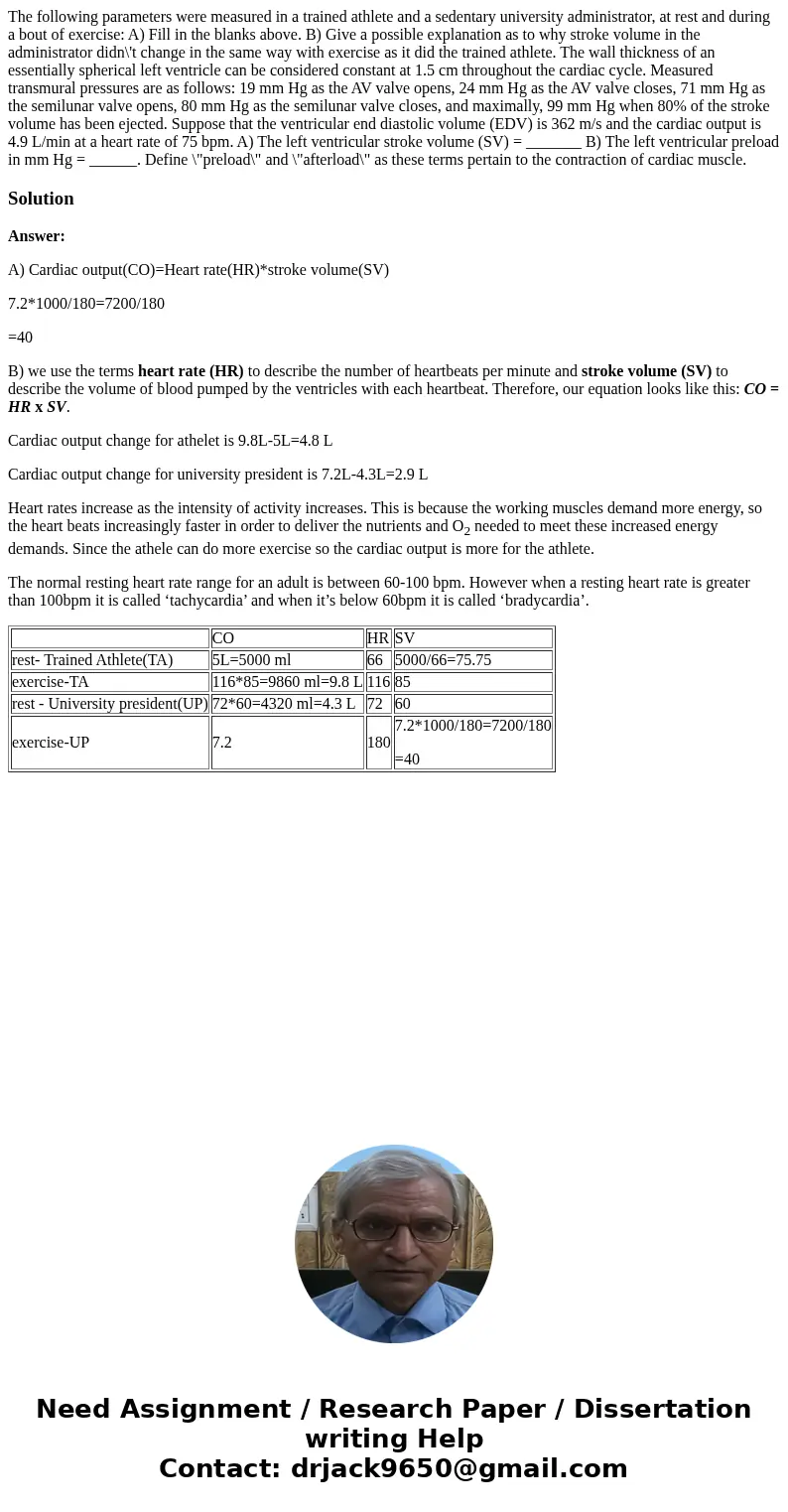The following parameters were measured in a trained athlete
Solution
Answer:
A) Cardiac output(CO)=Heart rate(HR)*stroke volume(SV)
7.2*1000/180=7200/180
=40
B) we use the terms heart rate (HR) to describe the number of heartbeats per minute and stroke volume (SV) to describe the volume of blood pumped by the ventricles with each heartbeat. Therefore, our equation looks like this: CO = HR x SV.
Cardiac output change for athelet is 9.8L-5L=4.8 L
Cardiac output change for university president is 7.2L-4.3L=2.9 L
Heart rates increase as the intensity of activity increases. This is because the working muscles demand more energy, so the heart beats increasingly faster in order to deliver the nutrients and O2 needed to meet these increased energy demands. Since the athele can do more exercise so the cardiac output is more for the athlete.
The normal resting heart rate range for an adult is between 60-100 bpm. However when a resting heart rate is greater than 100bpm it is called ‘tachycardia’ and when it’s below 60bpm it is called ‘bradycardia’.
| CO | HR | SV | |
| rest- Trained Athlete(TA) | 5L=5000 ml | 66 | 5000/66=75.75 |
| exercise-TA | 116*85=9860 ml=9.8 L | 116 | 85 |
| rest - University president(UP) | 72*60=4320 ml=4.3 L | 72 | 60 |
| exercise-UP | 7.2 | 180 | 7.2*1000/180=7200/180 =40 |

 Homework Sourse
Homework Sourse